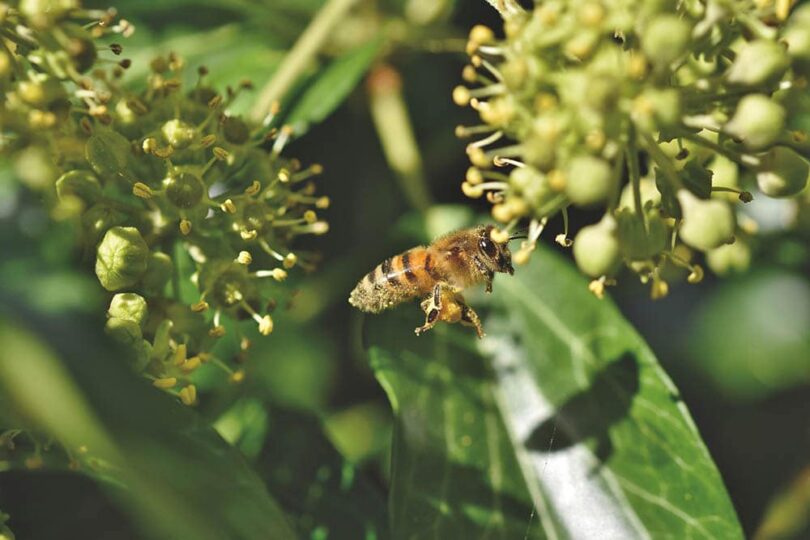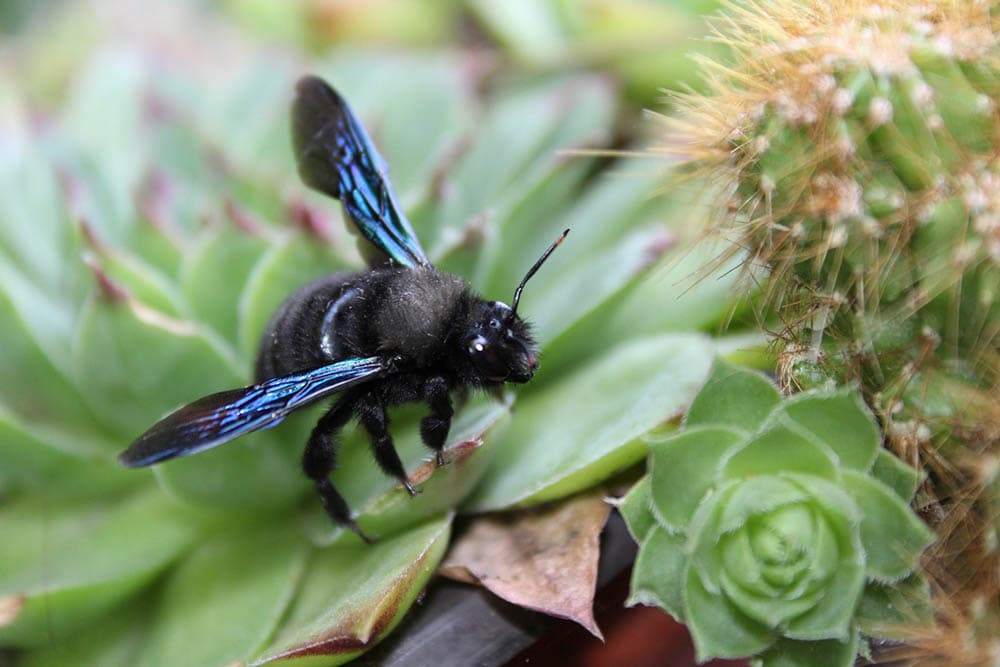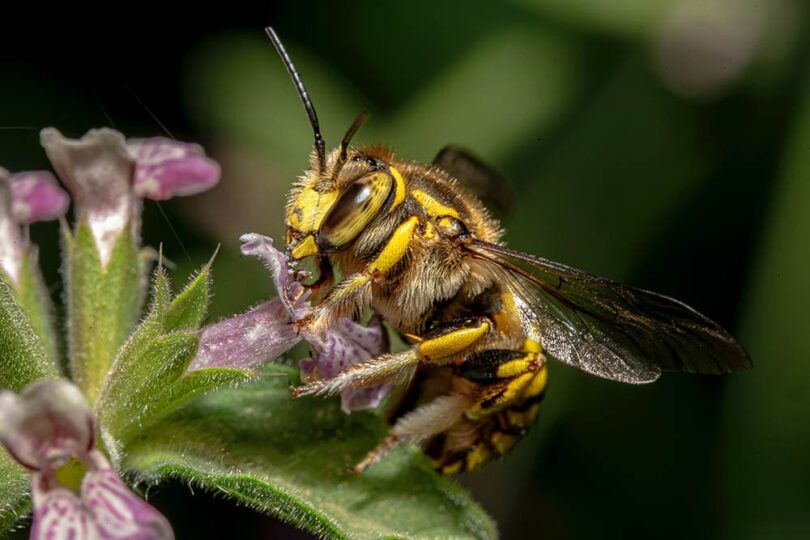Can Bees Fly at Night? Facts & FAQ
-
Codee Chessher
- Last updated:

Many of us never stop to consider what the lives of bees are actually like. The most common types, like honeybees, are typically seen during the day, retreating to their nests for periods of low activity in the nighttime. However, can bees actually fly in the dark or at nighttime?
Most species only fly during the day and in well-lit conditions because their eyes have evolved to see best with lots of light. Some species, on the other hand, can see during dim and even dark conditions.

Are Bees Diurnal?

Most bees are diurnal, meaning they’re most active during the daytime hours. Honeybees and bumblebees, for instance, are diurnal bees that fly best during the daytime when it’s well-lit outside. At night they can still move around but lack the visual abilities to fly accurately. Instead, diurnal bees can be seen crawling when it gets dim or dark.
Are Some Bees Incapable of Flying at Night?
Studies on how well diurnal bees fly at night have concluded that low light does drastically affect how they fly. For one, bees fly in a more circuitous, aimless pattern before landing, which implies they can’t accurately see to land in the dark. Another interesting tidbit is that diurnal bees can fly at night if they want or need to, but they prefer to hurry home to their nest when it gets dim to preserve energy for the next day.
Can Some Bees See in the Dark?

Yes, some species of bees have evolved to see better in dim or dark conditions. Many of these are merely crepuscular, meaning they’re most active during the dim hours before sunrise and twilight. These bees have evolved to take advantage of a few competitors during low-light times, developing more sophisticated eyes designed for dim lighting. Less competition allows them to primarily forage on flowers that open at nighttime. Notably, crepuscular bees require lighter twilight skies to forage and will become confused when inclement weather obscures the sky.
Other bees like the sweat bee are fully nocturnal, though even nocturnal bees prefer to hunt with plenty of moonlight. Flowers like the moonflower and twilight jasmine only open at night, making them favorites of nocturnal bees. There are an estimated four to seven species of nocturnal bee families, like Apidae and Colletidae.
The exact mechanisms of how bees see in the dark are quite interesting. For one, their brains extend the period between the eyes collecting light and sending the visual information to the brain. This helps the bee see better, but it also means they see blurrier at night.
Why Do Some Bees Fly at Night?

Evolution is a slow process, and the first night-flying bees would have been regular bees that noticed less competition during dim twilight and morning hours. Over time, their eyes would have adjusted to allow more light than day-flying bees. This adaptation was especially prevalent in tropical regions of Asia and Latin America, where dim light provides some protection from diurnal insect-eating animals and parasites. Although most nocturnal bees require half or full moonlight to fly, some species in Panama are known to forage during new moons when there’s no moonlight at all.
At night, the only real competition nocturnal pollinators face are bats and moths. With fewer bees lost to predators, nocturnal bees lived longer to reproduce. Over time they passed on their night vision and helped provide pollination around the clock.

Conclusion
Bees are fascinating creatures responsible for pollinating plants, which makes their continued survival imperative. While most bees are capable of flying at night, they prefer not to, while tropical species are more likely to do well in low light.
Related Reads:
Featured Image Credit: Ralphs_Fotos, Pixabay
Contents
